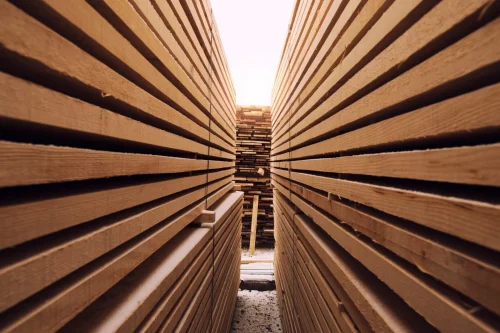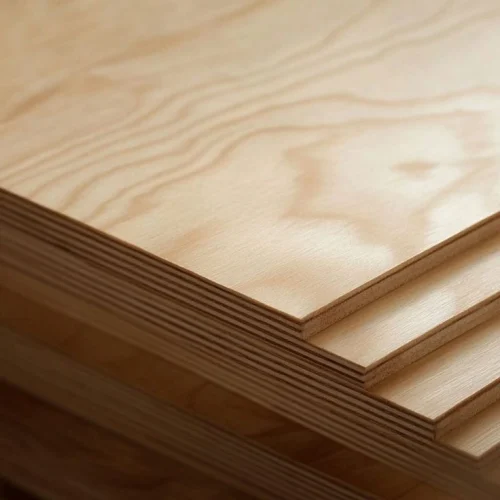
Is Termite-Proof Plywood Worth It? Benefits and Considerations
April 15, 2025
A Simple Guide to Pipes Valves and Their Uses
April 15, 2025Plywood is quite possibly the most widely used material when it comes to construction and design. You can see the use of plywood wood in wardrobes, wall panels, and even floors. However, when we talk about picking the right kind of plywood, we tend to overlook certain qualities like plywood grades and combinations.
Plywood grades are a standard way to know the quality and durability of the plywood sheets. Knowing the grades and the right plywood combination can help you pick the right material for your preferred application. This guide will help you understand what are plywood grades, their types, and how you can choose the right plywood for your home.
What Is Plywood Grading?
Plywood grading is a sorting system wherein plywood is categorised based on its surface quality, strength, and resistance to moisture and other such elements. This grading system can help you pick the best plywood sheet for different applications. Plywood grades often range from A to D, however, you might also see other grading systems such as moisture-resistant (MR), boiling water-resistant (BWR), and boiling waterproof (BWP).
Knowing the plywood grading can be a way to make sure that the plywood sheet types you choose for your home solution are not just functional but also stylish.
Related Read: What is WPC plywood? (How it is different from normal plywood)
Types of Plywood Grades
Grade A Plywood
Grade A plywood is smooth, sanded, and almost flawless in appearance. There are minimal knots or any visible faults. This plywood grade is ideal for interior decoration, furniture, and areas where visuals and style matter more than functionality. In terms of affordability, Grade A plywood is on the higher end because of its high-quality finish.
Grade B Plywood
Grade B plywood has a clean surface with some minor knots and patches. This grade of plywood is often used in areas where surface appearance is moderately important such as the interior sides of a cabinet or shelves. In terms of affordability, Grade B plywood is slightly more affordable than Grade A as it has a decent aesthetic appeal.
Grade C Plywood
Grade C plywood is usually unsanded and there are visible imperfections on the surface such as knots and splits. This grade of plywood is best used for subflooring, layering, or other structural uses where aesthetics aren’t a priority. Grade C plywood is more pocket-friendly and can be more commonly used in construction.
Grade D Plywood
Grade D plywood is ranked the lowest as it shows many defects on its surface with hardly any repair work. This grade of plywood has a rough surface and can be ideal for hidden structural construction or temporary applications. Grade D plywood is very cheap to afford and is not used for finishing as it doesn’t hold any visual appeal.
Other Types of Plywood Grades
When we talk about other types of plywood grades, there is a system that is reserved for moisture-resistant plywood. Here are some of them:
Moisture-Resistant Plywood (MR)
This plywood type is ideal for indoor use and for areas where moisture and humidity might be more prominent, such as bedrooms and living rooms. This grade of plywood, however, is not waterproof, only resistant to humidity.
Boiling Water Resistant Plywood (BWR)
BWR plywood wood type is usually applied in kitchens, bathrooms, and semi-outdoor areas where there is occasional moisture exposure.
Boiling Waterproof or Marine Grade Plywood (BWP)
BWP or marine grade plywood type of material is best for building outdoor furniture or used in areas where there is high rainfall. This grade of plywood is highly resistant to water and is more durable than others.
Also Read: Plywood vs Engineered Wood: Which is the Better Choice for Your Home?
Plywood Grade Combinations to Know:
It’s very common to see plywood materials listed with dual grades like A–C, B–D, or D–D, etc. These combination grades are usually the front and the back face grades of the plywood sheet types. Now, what do they mean? Let’s take a look:
- A–C Grade Plywood: This means that the front surface of the plywood is Grade A, while the back surface is more rough like Grade C. It will hold a visual appeal only when one side is exposed.
- B–D Grade Plywood: This means that the plywood sheet is ideal for structural construction where one side is presentable but not pristine.
- D–D Grade Plywood: D–D grade or C–C grade plywood combination means that these plywood sheets can be used in construction where both sides will be hidden.
Plywood combination grades such as the above help manufacturers and carpenters balance the aesthetics and budget, making it more flexible to choose based on the visual appearance, functionality, and strength.
How to Choose the Right Plywood Grade?
To choose the best plywood grade is more than just putting a name or categorising the plywood types. Here’s what else you need to know when selecting a plywood grade for your home needs:
- Think about the use: If you are looking for plywood sheets for furniture or wall panelling, then Grade A or B would be ideal, however, if you are looking for framework or layering, then Grade C or D might be the right pick.
- Assess water exposure: If you’re picking the plywood for kitchen use, bathroom use, or outdoor use, then you might need to consider moisture-resistant plywood. Here, you can pick between MR, BWR, and BWP plywood grades.
- Balancing is essential: For a perfect look, choose to balance aesthetics and budget. Grade A will give you a more visually appealing finish but will cost more. If you are not looking for something aesthetic, then choose lower plywood grades for affordability and strength.
- Think about plywood wood types too: Plywood comes in hardwood and softwood wood types. Hardwood types such as teak and birch are stronger and more durable than softwood types such as pinewood.
Final Words:
On the surface, plywood seems like an easy material to work with, however, some details are often overlooked, such as plywood grades and combinations. Knowing how plywood grades work can help you make smart, cost-effective, and balanced choices for your home construction and renovation. Whether you’re building furniture or changing the interior design, the right plywood grade can balance function with aesthetics, so choose wisely!
About GreenFortune uPVC:
Your search for high-quality uPVC products ends here! GreenFortune prides itself on delivering the best products that offer a balance of innovation, technology, and aesthetics that improve your living standards. Our wide range of products and home improvement solutions provide durability, energy efficiency, and functionality (with style). To explore our products, click here.
Frequently Asked Questions (FAQs):
Q: Which grade is best in plywood?
Grade A plywood is considered the best grade, as it offers a high-quality finish and no visible defects. Grade A is also a superb choice for surfaces where style, finish, and aesthetics are valued.
Q: Which ply is better, BWP or BWR?
Both BWP and BWR are strong, however, BWP is a superior choice because it has a good bonding process. BWP or boiling waterproof can be used for areas where more sturdiness is demanded. On the other hand, BWR or boiling water-resistant is ideal for commercial use.
Q: What thickness of plywood is best?
A thickness of 12 mm plywood is a flexible choice and can be used to build furniture, cabinets, and wall panels. 18 mm plywood is more thicker and sturdy plywood sheet which is ideal for heavy-duty use such as shelves and countertops.










